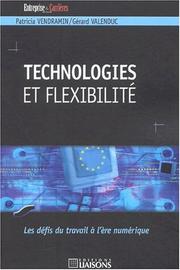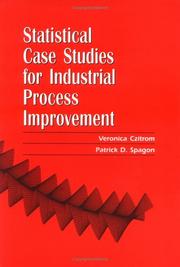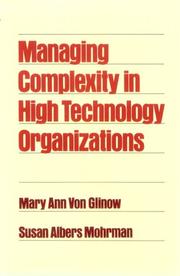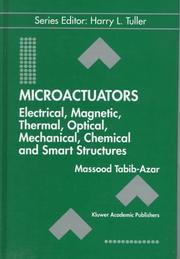| Listing 1 - 10 of 13 | << page >> |
Sort by
|
Dissertation
ISBN: 9789460188015 Year: 2014 Publisher: Leuven Katholieke Universiteit Leuven
Abstract | Keywords | Export | Availability | Bookmark
 Loading...
Loading...Choose an application
- Reference Manager
- EndNote
- RefWorks (Direct export to RefWorks)
Today's generation of wireless sensor networks are now moving out of the lab and into the real world. While early applications were single-purpose and primarily of a prototypical nature, contemporary sensor networks are increasingly evolving towards dynamic, multi-stakeholder, multi-purpose scenarios such as smart cities and intelligent logistics. Developing applications for these scenarios requires: (i) expertise along the entire value chain, (ii) appropriate software development paradigms, and (iii) middleware support to mitigate the complexities of distribution and dynamism.Current approaches to programming wireless sensor network applications place a significant burden on the developer, who is forced to take on multiple roles at once: embedded software developer, domain expert, and network technician. These practices are unsustainable in the long-term and stand in clear conflict with the variety of skills needed to design, develop, assemble, deploy, and manage contemporary sensor network applications. In addition, existing solutions for software reconfiguration and management are either coarse-grained and inefficient, or do not provide adequate support for inspection and management of complex distributed software dependencies at run time. The work presented in this dissertation tackles this problem with a two-fold approach: (i) improving software development efficiency for heterogeneous stakeholders through dedicated software abstractions, and (ii) supporting the long-term adaptation, evolution and management requirements of sensing applications. Solutions presented in this dissertation try to maximise flexibility, while respecting the resource constraints of embedded sensing platforms.The key contributions presented in this dissertation are two-fold: (i) stakeholder-appropriate programming paradigms and (ii) efficient runtime support for management and reconfiguration. These contributions are realised in the Component and Policy Infrastructure (CaPI) middleware. The CaPI middleware consists of a programming model and a supporting runtime environment. The CaPI programming model offers abstractions tailored to accommodate the specific software development objectives of embedded developers, application experts, and infrastructure managers. Embedded developers are supported in the creation and encapsulation of generic units of software by LooCI, a lightweight component model specifically designed for dynamic sensor networks. Application experts use LooCI's flexible binding model to safely assemble components into distributed application compositions. Finally, infrastructure managers are supported by expressing management objectives via PMA, a programming environment that supports lightweight policies. The CaPI runtime environment operationally integrates LooCI and PMA and addresses the long-term adaptation, evolution and management requirements of the dynamic software life cycle. Integration is supported by a unified distribution infrastructure, the 'event bus' that masks network heterogeneity and providesfulldistribution transparency. Evolution and management requirements are supported by means of a flexible runtime environment that offers support for dynamic reconfiguration and inspection of distributed application structure and state.The contributions in this dissertation have been validated on representative sensor network platforms and through a number of real-world scenarios performed in close collaboration with academic and industrial partners. Evaluation results demonstrated that CaPI enables flexible and efficient software development andreconfiguration support at significantly lower costs than existing state-of-the-art solutions.
681 --- academic collection --- Precision mechanisms and instruments --- Theses --- 681 Precision mechanisms and instruments
Dissertation
ISBN: 9058920453 Year: 2003 Publisher: Rotterdam ERIM
Abstract | Keywords | Export | Availability | Bookmark
 Loading...
Loading...Choose an application
- Reference Manager
- EndNote
- RefWorks (Direct export to RefWorks)
681 --- Precision mechanisms and instruments --- Theses --- 681 Precision mechanisms and instruments
Book
ISBN: 9781409425939 Year: 2011 Publisher: Farnham ; Burlington VT Ashgate
Abstract | Keywords | Export | Availability | Bookmark
 Loading...
Loading...Choose an application
- Reference Manager
- EndNote
- RefWorks (Direct export to RefWorks)
Astrolabes --- Astronomy, Medieval --- 681 --- Medieval astronomy --- 681 Precision mechanisms and instruments --- Precision mechanisms and instruments --- Astronomical instruments --- History

ISBN: 2878804287 Year: 2002 Publisher: Rueil-Malmaison Liaisons
Abstract | Keywords | Export | Availability | Bookmark
 Loading...
Loading...Choose an application
- Reference Manager
- EndNote
- RefWorks (Direct export to RefWorks)
Sociology of work --- Organizational change --- Flextime --- Changement organisationnel --- Horaires variables de travail --- 331.3 --- 331.4 --- 681 --- 331.87 --- 67.002 --- Secundaire arbeidsvoorwaarden --- Arbeidsmilieu. Arbeidsomgeving. Werkmilieu. Arbeidsomstandigheden --- Precision mechanisms and instruments --- organisatie van de arbeid - arbeidsorganisatie --- nieuwe technologieën - technologische vernieuwing --- 681 Precision mechanisms and instruments --- 331.4 Arbeidsmilieu. Arbeidsomgeving. Werkmilieu. Arbeidsomstandigheden --- 331.3 Secundaire arbeidsvoorwaarden

ISBN: 0898713943 Year: 1997 Publisher: Philadelphia, Penn. SIAM
Abstract | Keywords | Export | Availability | Bookmark
 Loading...
Loading...Choose an application
- Reference Manager
- EndNote
- RefWorks (Direct export to RefWorks)
Mathematical statistics --- Process control --- Semiconductor industry --- Statistical methods --- Case studies. --- 519.2 --- 681 --- Probability. Mathematical statistics --- Precision mechanisms and instruments --- 681 Precision mechanisms and instruments --- 519.2 Probability. Mathematical statistics --- Electronic industries --- Control of industrial processes --- Industrial process control --- Automatic control --- Manufacturing processes --- Quality control --- Statistical methods&delete& --- Case studies
Book
ISBN: 9789020969337 Year: 2006 Publisher: Leuven Lannoo
Abstract | Keywords | Export | Availability | Bookmark
 Loading...
Loading...Choose an application
- Reference Manager
- EndNote
- RefWorks (Direct export to RefWorks)
Multimedia is een tegenwoordig veel gebruikte term, maar dikwijls ten onrechte. Dit boek legt uit wat een multimediaproject juist inhoud, hoe het tot stand komt en wat er allemaal komt bij kijken. Het is geen theoretische uiteenzetting maar een 'verhaal' geschreven vanuit de praktijk. Het boek start met een overzicht van de ontwikkelingen op het vlak van multimediatoepassingen in de voorbije 15 jaar, om vervolgens de verschillende aspecten ervan te belichten. Dit wordt prachtig geïllustreerd met een drietal ontworpen producties, waarvan de totstandkoming volledig uit de doeken wordt gedaan. De praktische toets volgt uit een zestal interviews met vertegenwoordigers van belangrijke multimediabedrijven in België. Tot slot geeft de auteur nog haar visie op de toekomst van het multimediagebeuren. Het boek biedt boeiende lectuur voor al wie interesse heeft voor het multimediagebeuren en wat daar bij komt kijken, en in het bijzonder voor designers en ontwikkelaars van multimediaproducten.
multimedia --- Computer. Automation --- Mass communications --- Multimedia --- Media --- Nieuwe media --- Geschiedenis --- Audiovisuele media --- 681.3*H51 --- 681 --- 681 Precision mechanisms and instruments --- Precision mechanisms and instruments --- 681.3*H51 Multimedia information systems: audio input/output, video, hypertext navigation --- Multimedia information systems: audio input/output, video, hypertext navigation --- Geneeskunde --- Techniek (wetenschap) --- Atlas --- Museum
Book
ISBN: 9789004264397 Year: 2014 Volume: 46 4 Publisher: Leiden ; Boston Brill
Abstract | Keywords | Export | Availability | Bookmark
 Loading...
Loading...Choose an application
- Reference Manager
- EndNote
- RefWorks (Direct export to RefWorks)
Scientific apparatus and instruments. --- Exhibitions --- 681 --- Exhibits --- Expositions --- Industrial arts --- Industrial exhibitions --- International exhibitions --- Technology --- World's fairs --- Sales promotion --- Fairs --- Apparatus, Scientific --- Instruments, Scientific --- Science --- Scientific instruments --- Research --- Social aspects. --- Precision mechanisms and instruments --- Instruments --- Equipment and supplies --- 681 Precision mechanisms and instruments --- Expos (Exhibitions) --- Scientific apparatus and instruments --- Social aspects
Book
ISBN: 9264126872 9789264126879 Year: 1985 Publisher: Paris: OECD,
Abstract | Keywords | Export | Availability | Bookmark
 Loading...
Loading...Choose an application
- Reference Manager
- EndNote
- RefWorks (Direct export to RefWorks)
Semiconductor industry --- #ECO:04.09:sectoren IT-technologie ICT internet --- 681 --- AA / International- internationaal --- 654 --- 338.043 --- 384.0 --- 384.7 --- Electronic industries --- Precision mechanisms and instruments --- Informatieverwerking. Bureautica. --- Technologische vooruitgang. Automatisering. Computers. Werkgelegenheid en informatica. --- Telecommunicatie: algemeenheden. --- Tele-informatie. Datatransmissie. --- 681 Precision mechanisms and instruments --- Informatieverwerking. Bureautica --- Technologische vooruitgang. Automatisering. Computers. Werkgelegenheid en informatica --- Telecommunicatie: algemeenheden --- Tele-informatie. Datatransmissie

ISBN: 0195057201 Year: 1990 Publisher: New York (N.Y.) : Oxford university press,
Abstract | Keywords | Export | Availability | Bookmark
 Loading...
Loading...Choose an application
- Reference Manager
- EndNote
- RefWorks (Direct export to RefWorks)
65.01 --- 681 --- High technology industries --- -Organizational behavior --- Behavior in organizations --- Management --- Organization --- Psychology, Industrial --- Social psychology --- Industries --- Methods and methodology. Theory and practice of organization --- Precision mechanisms and instruments --- Organizational behavior. --- Management. --- 681 Precision mechanisms and instruments --- 65.01 Methods and methodology. Theory and practice of organization --- Organizational behavior

ISBN: 0792380894 1461554454 9780792380894 Year: 1998 Publisher: Boston: Kluwer,
Abstract | Keywords | Export | Availability | Bookmark
 Loading...
Loading...Choose an application
- Reference Manager
- EndNote
- RefWorks (Direct export to RefWorks)
219 8. 2 Sensors 221 8. 3 Physical Sensors 222 8. 3. 1 Electrical Sensing Means 223 8. 3. 2 Magnetic Field Methods 231 8. 3. 3 Optical Methods 232 8. 4 Chemical Sensors 241 8. 4. 1 Electrical Gas and Chemical Sensors 243 8. 4. 2 Guided-Optics Intrinsic Chemical Sensors 246 8. 4. 3 Extrinsic Chemical Sensors 250 8. 4. 4 Polymer Waveguide Chemical Sensors 251 8. 4. 5 Surface Plasmon Chemical Sensors 252 8. 4. 6 Indicator-Mediated Extrinsic Sensing 253 8. 4. 7 Optical Biosensors 256 8. 4. 8 Ultrasonic Gas and Chemical Sensors 257 8. 4. 9 Intelligent Sensors 258 8. 5 Connections/Links and Wiring 258 8. 5. 1 Optical Links 260 8. 5. 2 Requirement on the Processing Unit/Intelligence 262 8. 6 Actuators 263 8. 7 Signal Processing/Computing 264 8. 7. 1 Implicit Computation 266 8. 7. 2 Explicit Computation 267 8. 8 References 274 Subject Index 279 Micro-Actuators (Electrical, Magnetic, Thermal, Optical, Mechanical, and Chemical) It has become quite apparent that sensors and actuators are the main bottleneck of the modem information processing and control systems. Microprocessors and computers used to be the main limiting element in most information processing systems. But thanks to the enonnous progress in the microelectronics industry, most information analysis tasks can be processed in real time. The data has to be acquired by the processor in some form and processed and used to produce some useful function in the real world.
Microactuators --- 681 --- 681.58-181.48 --- #BIBC:T1998 --- Actuators --- Microelectromechanical systems --- 681 Precision mechanisms and instruments --- Precision mechanisms and instruments --- Microsysteemtechnologie --- Electrical engineering. --- Materials science. --- Mechanical engineering. --- Electrical Engineering. --- Characterization and Evaluation of Materials. --- Mechanical Engineering. --- Engineering, Mechanical --- Engineering --- Machinery --- Steam engineering --- Material science --- Physical sciences --- Electric engineering --- Microactuators. --- Microactionneurs --- Actionneurs
| Listing 1 - 10 of 13 | << page >> |
Sort by
|

 Search
Search Feedback
Feedback About UniCat
About UniCat  Help
Help News
News